- Home
- Georges Simenon
Three Bedrooms in Manhattan (New York Review Books Classics)
Three Bedrooms in Manhattan (New York Review Books Classics) Read online
GEORGES SIMENON (1903–1989) was born in Liège, Belgium. His father was an insurance salesman, easygoing and unambitious; his mother, an unhappy, angry woman whose coldness and disapproval haunted her son. Simenon went to work as a reporter at the age of fifteen and in 1923 moved to Paris, where under various pseudonyms he became a highly successful author of pulp fiction while leading a dazzling social life in the company of his first wife and such lovers as the American dancer Josephine Baker. (He is said to have broken up with Baker because their affair was a distraction: he had produced a mere twelve novels in the year.) In the early 1930s, Simenon emerged as a writer under his own name, gaining renown for his detective stories featuring Inspector Maigret. He also began to write his psychological novels—books in which he displays his remarkable talent for capturing the look and mood of a place (whether West Africa, the Soviet Union, New York City, or provincial France) together with an acutely sympathetic awareness of the emotional and spiritual pain underlying the routines of daily life. Simenon remained in France throughout the Second World War, at the end of which he was accused of collaboration with the Germans; though quickly cleared of such charges, he moved to America, where he married his second wife and lived for close to a decade, returning to Europe in 1955. Having written nearly two hundred books under his own name and become the best-selling author in the world, whose stories had served as the inspiration for countless movies and TV shows, Simenon retired as a novelist in 1973, devoting himself instead to dictating memoirs that filled thousands of pages: “I consider myself less and less a writer … All this is nothing but chatter … Since dictating has become a need, so to speak, I will dictate every morning whatever comes into mind … I would like to be able to be silent.”
JOYCE CAROL OATES, Roger S. Berlind Distinguished Professor of Humanities at Princeton University, is the author of the recent novel The Tattooed Girl and the forthcoming The Faith of a Writer. She is a recipient of the National Book Award (1970) and a Common Wealth Award for Distinguished Service in Literature (2003).
THREE BEDROOMS IN MANHATTAN
GEORGES SIMENON
Translated from the French by
MARC ROMANO
LAWRENCE G. BLOCHMAN
Introduction by
JOYCE CAROL OATES
NEW YORK REVIEW BOOKS
New York
CONTENTS
Cover
Biographical Notes
Title Page
Introduction
Three Bedrooms in Manhattan
1, 2, 3, 4, 5, 6, 7, 8, 9, 10, 11
Copyright and More Information
INTRODUCTION
THE SLENDER book you hold in your hand is a “simenon”—a sparely written and tautly constructed novella by the phenomenal Belgian-born Georges Simenon (1903–1989), author of hundreds of works of prose fiction under his own and assumed names, in addition to countless screenplays, short stories, and the multivolume autobiographical Dictées (1975–1981) and Mémoires Intimes (1981).
A “simenon” may or may not be a crime/suspense novella, but it will always move swiftly and with seeming inevitability from its opening scene to its final, often startling and ironic conclusion; a “simenon” is the antithesis of the elaborately literary, infinitely digressive, and relatively plotless prose fiction of twentieth-century European modernism, notably Proust’s monumental seven-volume Remembrance of Things Past (published in its entirety in 1927). More temperamentally akin to such fluidly composed, radically distilled, and mordantly “existential” works of fiction as Camus’s The Stranger (1942), the experimental novellas of Alain Robbe-Grillet and Marguerite Duras, and such films as Jean-Luc Godard’s Breathless (1960) and Alain Resnais’s Hiroshima, Mon Amour (1959), the quintessential “simenon” makes no effort to establish a detailed, catalogued social world; its structure is a sequence of cinematic confrontations in which an individual—male, middle-aged, unwittingly trapped in his life—is catapulted into an extraordinary adventure that will leave him transformed, unless destroyed:
… He was waiting for something to which he aspired and which had not yet come… He was a man who, for a long time, had endured the human condition without being conscious of it, as others endure an illness of which they are unaware.
(Monsieur Monde Vanishes,
translated by Jean Stewart)
For all these years it had been a strain playing [his] part, and watching himself incessantly to make sure that he didn’t say or do the wrong thing. Now all that was ended.
(The Man Who Watched the Trains Go By,
translated by Stuart Gilbert)
All “simenons” have in common the language of understatement, which gives to the subgenre an air of the parable or allegory. As we read of the vertiginous plunge from stultifying bourgeois respectability to murder, moral chaos, and lunacy in, for instance, the much-admired The Man Who Watched the Trains Go By (1938), or the laconic récit of The Man with the Little Dog (1964), we come to feel that we are in the presence not of specific individuals so much as allegorical human types, as in those obsessively repeated two-dimensional images of bourgeois male anonymity in the canvases of Magritte. The characteristic glissando of Simenon’s prose, skillfully rendered in this new translation of a somewhat atypical “simenon,” provides, as in the smooth surface of ice, a reflecting movement that hints—subtly, mysteriously—of depths of secret feeling available to the protagonist, to be revealed only by degrees to the reader. Three Bedrooms in Manhattan is the most existential of love stories, stripped to skeletal urgency, highly cinematic yet underlaid by the desperation of François Combe, the most autobiographical of Simenon’s protagonists:
He was going too fast. He knew that he’d traveled, in almost no time at all, a long, steep path that men can take years to complete, often their whole lives, if they reach the end at all.
In most “simenons,” as in the nouveau romans of Robbe-Grillet, Duras, and others, there is a cinematic intensity to the observed world: Simenon is renowned for the succinctly rendered yet powerfully evocative atmospheres of his fiction. In his Parisian-set novellas, the weather in the streets is often bleak, overcast, pelting rain. Elsewhere, in Manhattan for instance, the atmosphere is similarly brooding, mysterious:
Two wide streets, almost deserted, with garlands of luminous globes running down the sidewalks.
On the corner, its high windows lit violently, aggressively, with boastful vulgarity, was a sort of long glass cage where people could be seen as dark smudges and where he went in just so as not to be alone.
Stools anchored to the floor along an endless counter made of something cold and plastic. Two sailors swayed drunkenly, and one of them shook his hand solemnly, saying something Combe failed to understand.
It wasn’t on purpose that he sat down beside the woman. He realized it only when the white-coated black waiter was standing in front of him, impatient for his order.
The place smelled of fairgrounds, of lazy crowds, of nights when you stayed out because you couldn’t go to bed, and it smelled like New York, of its calm and brutal indifference.
Despite hostile weather, a Simenon character, in a state of anxious exhilaration, can walk for hours, miles:
It was cold and drizzling. The sky hung low with heavy gray clouds. The East River was covered with angry white crests of waves, the tugs sounded shrill whistles, and ugly flat-bottomed brown ferryboats carried passengers back and forth on unchanging routes, like trams…
That one last worry, which he dragged past block after block of buildings, brick cubes with iron staircases outside in case of fire, wher
e the question was not how people had the strength to go on living there—that was easy enough—but how they had the strength to die there.
It’s rare to discover in Simenon a complex sentence, let alone a soaring, even grandiloquent flight of prose:
A magnificent sight, magnificent and sordid, met [Monsieur Monde’s] eyes: the soaring blocks of blackened houses between which the train was threading its way, with hundreds and thousands of windows open or closed, linen hanging out, aerials, a prodigious accumulation, in breadth and in height, of teeming lives, from which the train suddenly broke away after a glimpse of the last green-and-white bus in a street that already seemed like a highway.
(Monsieur Monde Vanishes)
Though there are notable exceptions, most of Simenon’s sentences are spare and without adornment, and his paragraphs are generally short, even staccato; that Simenon began his writing career as a journalist and the pseudonymous author of hundreds of pulp fictions comes as no surprise. “Be simple. Never try for a literary effect. Leave out every word and syllable you can,” Colette advised the younger writer, who seems to have followed her advice throughout his career.
Perhaps not surprisingly, Simenon’s more conventional crime/detective novels, featuring the laconic Inspector Maigret, have always been more popular than the others. Maigret is an irresistibly engaging character, middle-aged, pipe-smoking, a lover of good food and drink, rather gruff, no-nonsense, and the antithesis of the world’s most famous amateur sleuth, the Englishman Sherlock Holmes, whom Simenon disdained. Like his creator, Inspector Maigret prefers to understand than to judge; he has a knack for putting himself in the minds of others, especially criminal others.
Universal to Simenon’s work, whether a Maigret title or one of his less formulaic novels, is a concentration on behavior that might be considered obsessive. As the novels are formally prescribed, so too the circumstances of their composition were formally prescribed, ritualistic and obsessive. A self-declared fetishist, Simenon required absolute privacy from interruptions; specific notebooks, pencils, pipes filled and lined up on his desk; manila envelopes, white paper, maps, dictionaries, such stimulants as coffee and Coca-Cola. In the mid-Sixties he seems to have decided that writing a manuscript with a pencil was too self-conscious a technique, and switched to a manual typewriter: “With a pencil you feel too much like a writer. It elicits elegant turns of phrase, lovely images, and so on.” Writing a “simenon” usually took no more than nine or ten days, including three days for revisions, but these were obviously days of extraordinary concentration, a kind of controlled manic frenzy that brought the author close to breakdown, exhaustion.
Simenon spoke openly, perhaps boastfully, of his “neurotic” nature; in When I Was Old (1971), one of twenty-seven autobiographical titles by Simenon, as well as in numerous interviews, he describes himself as an “obsessive”—a “psychopath.” (Rivaling Don Giovanni, Simenon once claimed to have had sex with as many as ten thousand women, the majority of them prostitutes.) Biographers suggest a narcissistic personality skilled in the manipulation of others, but hardly a psychopath; the circumstances of Simenon’s private life may seem to some of us rather more pragmatic and self-serving than clinically psychopathic, just as Simenon’s output, invariably described as “prodigious,” is perhaps not so exceptional measured against the achievements, quantitative as well as qualitative, of Balzac, Dickens, Trollope, Dostoevsky, Henry James. (The typical “simenon” is less than two hundred smaller-than-average pages.) Simenon’s biographer Pierre Assouline asserts that Simenon lied about himself compulsively, but that his lies were a “novelist’s lies,”
…told with all his characteristic genius. They were solicitous, too: lies that told the truth, lies by omission, selective amnesia… By middle age [Simenon] was no longer able to tell truth from falsehood, real from imaginary.
As he grew older, his self-intoxication grew to the point where he sincerely believed everything he said and wrote about himself. He became the worst source of information about Georges Simenon, until finally author and readers alike were lost in a hybrid form of autobiographical fiction.
Allowing even for self-aggrandizement, Georges Simenon was certainly the great best-seller in the French language of the twentieth century, and surely one of the great international best-sellers of all time. His books are said to have been translated into fifty-five languages, and to have sold as many as 200 million copies. Since Simenon wrote his early books under pseudonyms, no one seems to know precisely how many book-length titles he published, but the estimate of four hundred–plus seems plausible. There have been as many as sixty feature films and nearly three hundred television adaptations, predominantly in Europe and featuring Inspector Maigret. Though, unfortunately, relatively few of Simenon’s titles are in print in the United States at present, his books continue to sell in Europe. By the time of his death in 1989, the income from Simenon’s printed work had been long eclipsed by the income from subsidiary rights.
Despite his “difficult” personality, and charges of wartime collaboration with the Nazis, Simenon has been admired by a remarkable diversity of his fellow writers, among them Henry Miller, Thornton Wilder, Somerset Maugham, John Cowper Powys, Ian Fleming, Dashiell Hammett (“Simenon is the best author of the genre”). André Gide (the publisher’s reader who had headed the Gallimard committee notable for having rejected Proust’s Swann’s Way, the first volume of Remembrance of Things Past, in 1912) made the extravagant claim that Simenon was perhaps the best French writer of the twentieth century, though, astonishingly, Gide believed that Simenon had “not really fulfilled his promise.”
Three Bedrooms in Manhattan, originally published in France, in 1946, as Trois chambres à Manhattan, is both a typical and an atypical “simenon.” It belongs to that category of his work to which Simenon gave the generic name dur, or “hard,” to distinguish it from the Maigret novels. One of the most overtly autobiographical of Simenon’s novels, Three Bedrooms is a fictionalized account of Simenon’s impassioned love affair with Denyse Ouimet, whom he met in Manhattan in November 1945 (Simenon interviewed the strong-willed young woman, seventeen years his junior, for a secretarial position) and would marry in June 1950 in Reno, Nevada, after his divorce from his current wife. In Three Bedrooms, the wife of the forty-eight-year-old protagonist is reimagined as an adulteress who has humiliated her husband by having eloped with a much younger gigolo; the protagonist, a Frenchman named François Combe, is not a best-selling writer but a famous Parisian actor who has fled to Manhattan to escape his past. Though Three Bedrooms is constructed like most “simenons,” sparely and urgently written, impressionistically atmospheric, with a middle-aged protagonist approaching a crisis in his life, it is considerably different in tone. Though set in the “calm and brutal indifference” of Manhattan, Three Bedrooms evolves by quirky degrees into an unexpected romance.
Unlike the typical Simenon protagonist, François Combe manages to resist the downward spiral of mere contingency and seems to will himself to establish a permanent relationship with Kay Miller, whom he has very casually met in a Greenwich Village diner. Though Kay Miller exhibits mannerisms that annoy Combe, the two are drawn together and consummate their mutual attraction, after hours of compulsive walking on Manhattan streets, in a seedy hotel room. Not long afterward, they make love in Combe’s rented room, which seals Combe’s sense of destiny:
For months now, Combe’s life had been going nowhere. But, until two days ago, he had at least been walking stubbornly in one direction.
On this chilly October morning, he was a man who had cut all the threads, a man approaching fifty, without ties to anything—not to family, profession, country, himself, and definitely not to a home. His only connection was to a complete stranger, a woman sleeping in his room in a seedy hotel.
The third room in Manhattan will be Kay Miller’s room, to which the lovers come as at the end of an arduous pilgrimage.
Three Bedrooms is a departure for Simenon, in that his p
rotagonist isn’t an ordinary bourgeois jolted out of his routine, stuporous life, but a “famous” man fleeing humiliation. (At this time, Simenon had been accused of wartime collaboration, charges which would later be dropped.) Where most of Simenon’s novellas are set in Europe, Three Bedrooms is pointedly set in several selected Manhattan bars, Greenwich Village, Rockefeller Center, on Fifth Avenue, and in a cheap hotel called the Lotus. These settings, deftly rendered, are cinematic backgrounds for the lovers’ escalating, if somewhat mysterious, relationship, which endures through Combe’s obsessive jealousy (a trait of Simenon’s) and Kay Miller’s distracting mannerisms (perhaps in emulation of the real-life Denyse, Kay Miller eats, drinks, and smokes cigarettes with exasperating slowness). The author is considerably challenged to make the reader feel the intensity of his lovers’ attraction for each other. Lacking overt drama, Three Bedrooms is perhaps best described as a memoirist work: it’s as if Simenon, master of irony, is overcome by wonder at what is happening to him, succumbing to romantic infatuation in jaded middle age. There is something very Gallic about Three Bedrooms, in the mode of the fated lovers of, for instance, Truffaut’s Jules et Jim. For here, for once, male skepticism is countered by female resiliency and good humor. The drift toward entropy and disaster is subverted. Though in the author’s own turbulent life his relationship with Denyse Ouimet would end tragically, as Denyse lapsed by degrees into psychosis, and their daughter Marie-Jo committed suicide, in Three Bedrooms all is new, yet to be discovered:
Tomorrow would be a new day. Now it was dawn, and far off, you could hear the city coming to life.
Why hurry? The day was theirs, and the days that would follow. The city no longer frightened them, not this one and not any other.

 The Snow Was Dirty
The Snow Was Dirty Maigret and the Tramp
Maigret and the Tramp Maigret's Anger
Maigret's Anger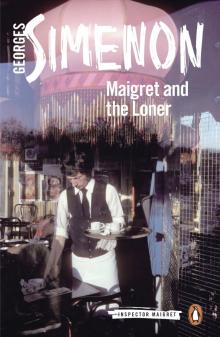 Maigret and the Loner
Maigret and the Loner The Krull House
The Krull House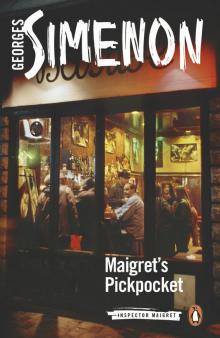 Maigret's Pickpocket
Maigret's Pickpocket Maigret and the Saturday Caller
Maigret and the Saturday Caller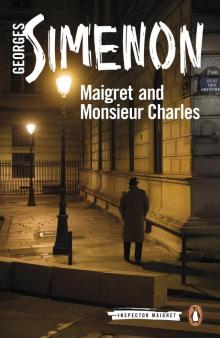 Maigret and Monsieur Charles
Maigret and Monsieur Charles Maigret Hesitates
Maigret Hesitates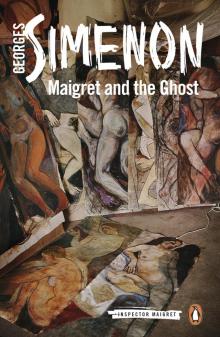 Maigret and the Ghost
Maigret and the Ghost Maigret and the Killer
Maigret and the Killer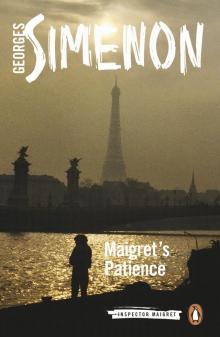 Maigret's Patience
Maigret's Patience Maigret and the Nahour Case
Maigret and the Nahour Case Maigret's Childhood Friend
Maigret's Childhood Friend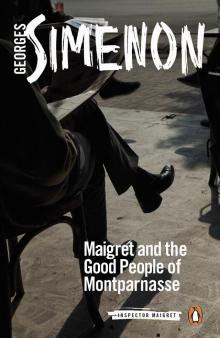 Maigret and the Good People of Montparnasse
Maigret and the Good People of Montparnasse Maigret and the Lazy Burglar
Maigret and the Lazy Burglar Maigret and the Wine Merchant
Maigret and the Wine Merchant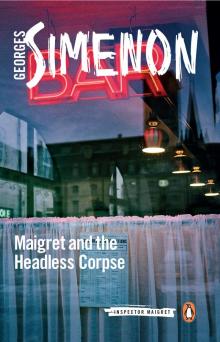 Maigret and the Headless Corpse
Maigret and the Headless Corpse A Crime in Holland
A Crime in Holland Maigret's Dead Man
Maigret's Dead Man The Late Monsieur Gallet
The Late Monsieur Gallet Maigret and the Old People
Maigret and the Old People Maigret's Holiday
Maigret's Holiday Liberty Bar
Liberty Bar The Misty Harbour
The Misty Harbour The Madman of Bergerac
The Madman of Bergerac Maigret's Mistake
Maigret's Mistake Maigret's Madwoman
Maigret's Madwoman Monsieur Monde Vanishes
Monsieur Monde Vanishes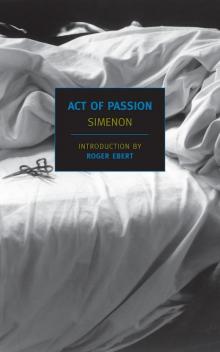 Act of Passion
Act of Passion The Two-Penny Bar
The Two-Penny Bar Dirty Snow
Dirty Snow Maigret at the Coroner's
Maigret at the Coroner's Félicie
Félicie Maigret in Court
Maigret in Court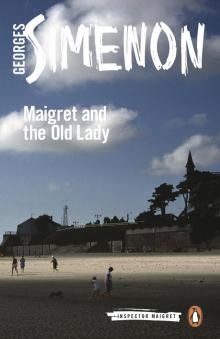 Maigret and the Old Lady
Maigret and the Old Lady The Hand
The Hand The Little Man From Archangel
The Little Man From Archangel Maigret's Memoirs
Maigret's Memoirs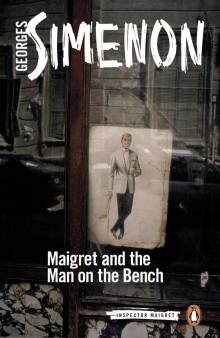 Maigret and the Man on the Bench
Maigret and the Man on the Bench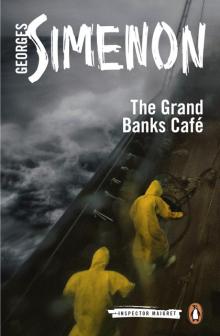 The Grand Banks Café
The Grand Banks Café Pietr the Latvian
Pietr the Latvian Maigret and the Dead Girl
Maigret and the Dead Girl Maigret and the Minister
Maigret and the Minister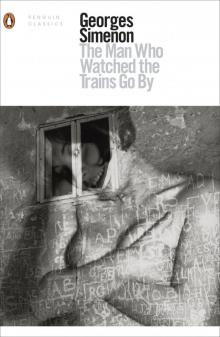 The Man Who Watched the Trains Go By
The Man Who Watched the Trains Go By Inspector Cadaver
Inspector Cadaver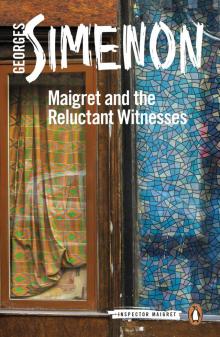 Maigret and the Reluctant Witnesses
Maigret and the Reluctant Witnesses Friend of Madame Maigret
Friend of Madame Maigret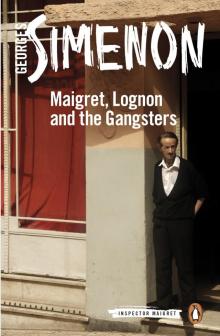 Maigret, Lognon and the Gangsters
Maigret, Lognon and the Gangsters Lock No. 1
Lock No. 1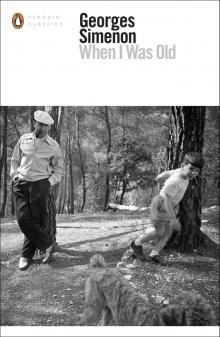 When I Was Old
When I Was Old The Blue Room
The Blue Room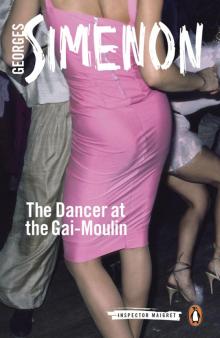 The Dancer at the Gai-Moulin
The Dancer at the Gai-Moulin The Train
The Train Maigret Takes a Room
Maigret Takes a Room Madame Maigret's Friend
Madame Maigret's Friend Maigret Enjoys Himself
Maigret Enjoys Himself Maigret and the Man on the Boulevard
Maigret and the Man on the Boulevard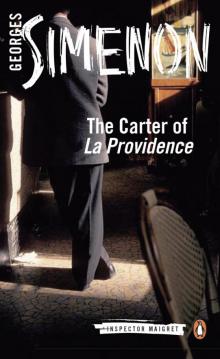 The Carter of ’La Providence’
The Carter of ’La Providence’ The President
The President The Cellars of the Majestic
The Cellars of the Majestic Maigret at Picratt's
Maigret at Picratt's Maigret 51 Maigret Travels
Maigret 51 Maigret Travels My Friend Maigret
My Friend Maigret Maigret
Maigret Maigret's Failure
Maigret's Failure Maigret's Revolver
Maigret's Revolver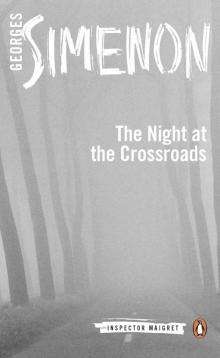 The Night at the Crossroads
The Night at the Crossroads The Flemish House
The Flemish House Maigret Gets Angry
Maigret Gets Angry Maigret's Doubts
Maigret's Doubts Maigret is Afraid
Maigret is Afraid Maigret Travels
Maigret Travels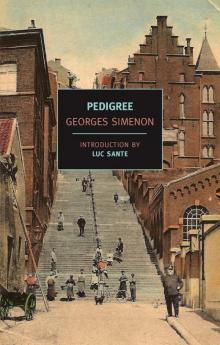 Pedigree
Pedigree Maigret's Secret
Maigret's Secret Maigret in New York
Maigret in New York Maigret's Doubts (Inspector Maigret)
Maigret's Doubts (Inspector Maigret) Sunday
Sunday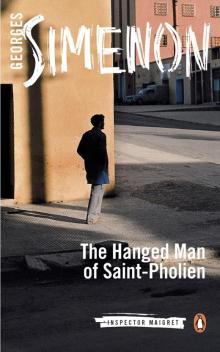 The Hanged Man of Saint-Pholien
The Hanged Man of Saint-Pholien The Yellow Dog
The Yellow Dog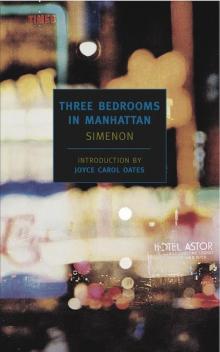 Three Bedrooms in Manhattan
Three Bedrooms in Manhattan Maigret Goes to School
Maigret Goes to School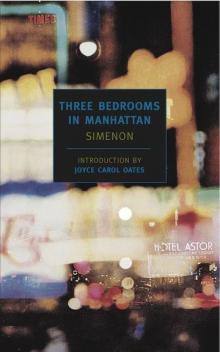 Three Bedrooms in Manhattan (New York Review Books Classics)
Three Bedrooms in Manhattan (New York Review Books Classics) The Hotel Majestic
The Hotel Majestic Maigret and the Tall Woman
Maigret and the Tall Woman The Judge's House
The Judge's House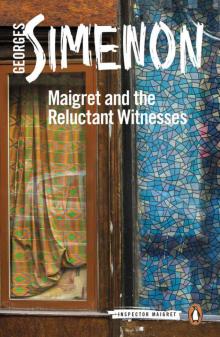 Maigret 53 Maigret and the Reluctant Witnesses
Maigret 53 Maigret and the Reluctant Witnesses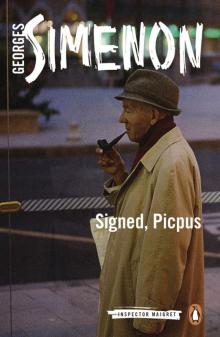 Signed, Picpus
Signed, Picpus Maigret: The Shadow in the Courtyard (1987)
Maigret: The Shadow in the Courtyard (1987)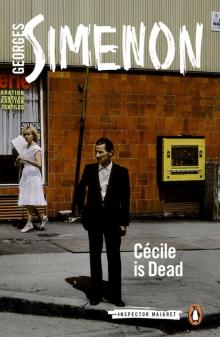 Cécile is Dead
Cécile is Dead Mr Hire's Engagement
Mr Hire's Engagement Maigret's First Case
Maigret's First Case Maigret Sets a Trap
Maigret Sets a Trap